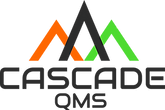Safety Training Priorities – 4th Quarter
In the fourth quarter of a small business, it’s crucial to prioritize the safety of your employees and customers. This includes updating and delivering various safety programs and training initiatives to ensure a secure and hazard-free environment.
Winter Weather Safety Training
With the onset of winter, provide comprehensive training to employees on navigating cold weather challenges. This should cover safe driving in winter conditions, appropriate attire for staying warm, and the importance of maintaining clear walkways and parking lots to prevent slips and falls.
A winter weather safety program should cover dressing for the cold, identifying hypothermia and frostbite, safe winter driving, walking on snow and ice, shoveling safely, emergency responses, vehicle prep, weather monitoring, and communication. Stress safe practices for icy areas, conduct emergency drills, follow company policies on remote work during bad weather, seek feedback for improvement, and maintain training records for employee readiness in cold conditions.
Holiday Season Safety Programs
As the holiday season attracts more visitors to your business, ensure the safety of everyone by implementing holiday-specific safety programs. Address potential hazards associated with crowded spaces, manage queues effectively, and emphasize the importance of maintaining clean and well-organized premises.
Fire Safety Drills and Training
Conduct fire safety drills and training sessions, reminding employees of the proper use of fire extinguishers and evacuation procedures. Ensure that smoke detectors and fire alarm systems are functioning correctly.
Fire safety drills and training should include regular practice sessions for employees to ensure familiarity with evacuation routes, the proper use of fire extinguishers, and the execution of emergency procedures. Begin with an overview of fire safety protocols and conduct hands-on drills to simulate fire scenarios. These exercises help reinforce knowledge and improve response times. Additionally, appoint fire safety wardens and designate assembly points for accountability during drills. After each routine, gather participant feedback and use it to fine-tune procedures and training materials, ensuring that your workforce is well-prepared to respond effectively in a fire emergency.
Emergency Response Training
Review and update your emergency response plan and train employees to respond to various emergencies, including medical incidents, fires, natural disasters, and security breaches.
Practical emergency response training involves:
- Clear communication of procedures.
- Identification of potential threats.
- Understanding the roles and responsibilities of each team member.
Start with comprehensive training sessions that outline various emergency scenarios and their appropriate responses. Incorporate hands-on exercises and drills to practice evacuation, first aid, and crisis management. Assign designated roles, such as safety wardens and first aid responders, to ensure efficient emergency coordination. Regularly review and update emergency response plans to adapt to evolving risks and incorporate lessons learned from previous exercises and real-life incidents. Promote a culture of preparedness and accountability among employees, emphasizing the importance of immediately reporting potential hazards or security concerns.
COVID-19 Safety Protocols
Continue to enforce and update safety measures related to COVID-19 in accordance with local health guidelines. Train employees on any new protocols and reinforce the importance of hygiene, mask-wearing, and social distancing.
Effective COVID-19 preparedness hinges on clear communication, strict adherence to health guidelines, and proactive measures. Start by disseminating information about COVID-19 prevention, symptoms, and testing to all employees. Implement stringent hygiene protocols, such as handwashing and sanitization of shared spaces. Modify workspaces to accommodate social distancing and improve ventilation. Develop and communicate remote work policies where feasible and consider staggered schedules. Encourage employees to self-monitor for symptoms and stay home when feeling unwell. Maintain flexibility in response to evolving health guidelines and regularly update employees on any changes in protocols or procedures. Prioritize employee safety and well-being while ensuring compliance with local health regulations.
Safe Handling of Holiday Decorations
If your business decorates for the holidays, train employees on safely installing and maintaining decorations. Emphasize fire-safe practices and the correct use of electrical outlets to prevent overloading circuits.
Employee Safety Training
Provide regular safety training sessions to employees, covering topics such as workplace hazards, the proper use of equipment, and safe lifting techniques. Cascade QMS offers a vast array of Safety Programs and Safety Training Videos that cover many topics. The 4th Quarter is a fantastic time to evaluate your training matrix and materials. Do you need a new Safety Manual? Cascade QMS can help with that, too! Safety Manual info can be located HERE
Security Awareness Training
In light of increased security risks during the holiday season, conduct security awareness training to help employees recognize and respond to potential threats or incidents. Review surveillance systems, alarms, and access control procedures.
Mental Health and Stress Management Workshops
Acknowledge that the holiday season can be stressful for employees. Offer workshops or resources on mental health awareness and stress management to support your team’s well-being.
There’s no better investment than your employees’ overall wellness—Cascade QMS partners with a fantastic workplace wellness group.
Remote Work Safety Guidelines
Remote employees must have the necessary ergonomic equipment and provide guidelines on safe work-from-home practices. Address potential ergonomic issues to prevent injuries. Proper PPE, ergonomic training, cyber security, and a current Employee Handbook are ideal solutions for this category.
Incident Reporting Training
Reinforce the importance of timely incident reporting and provide training on documenting and reporting safety incidents or concerns.
Effective incident reporting relies on a transparent and structured approach. Start by establishing clear reporting procedures that outline what incidents should be reported, how, and to whom. Encourage employees to report incidents promptly, emphasizing the importance of immediate notification to prevent escalation. Implement a user-friendly incident reporting system, allowing for easy documentation and submission. Offer anonymity options for sensitive issues to promote open reporting. Regularly review reported incidents, categorize them, and analyze trends to identify recurring problems or areas needing improvement. Finally, foster a culture of learning from incidents, emphasizing that the goal is reporting, prevention, and continuous improvement to enhance overall workplace safety.
Year-End Safety Review
Conduct a comprehensive year-end safety review to evaluate the effectiveness of your safety programs and identify areas for improvement in the coming year. Solicit feedback from employees to make data-driven improvements.
Conducting a comprehensive year-end safety review involves several essential steps. Start by gathering all incident reports and safety data from the year. Analyze this information to identify trends and areas of concern. Review the effectiveness of safety programs and training initiatives, seeking employee feedback. Assess the state of safety equipment and emergency response resources. Evaluate compliance with safety regulations and protocols. Identify any new safety risks that emerged during the year and update safety plans accordingly. Develop a detailed report summarizing your findings and outlining recommendations for the upcoming year. Share this report with relevant stakeholders and use it as a roadmap to prioritize safety improvements in the coming year, ultimately promoting a safer work environment.
Year-End Wrap Up
By focusing on these safety programs and training initiatives in the fourth quarter, your small business can enhance workplace safety, reduce risks, and promote a culture of safety among employees, ultimately ensuring a secure and productive end to the year and a safer year ahead. If you find yourself short on time, please keep them on the back burner. Cascade QMS has a fantastic team of safety experts on standby to assist. Call now for a complimentary consultation to identify the best plan for you!
[wpforms id=”8″]


